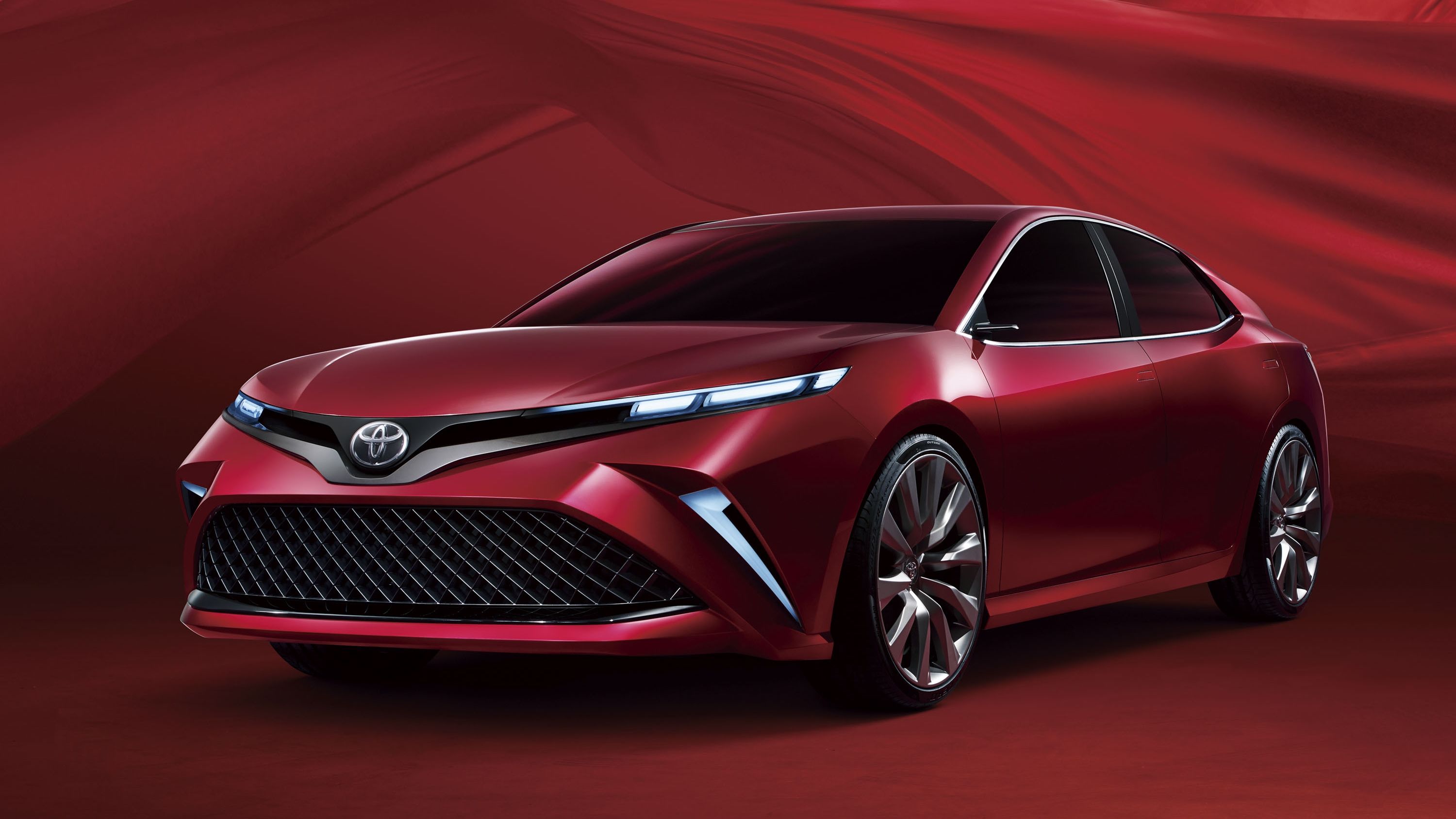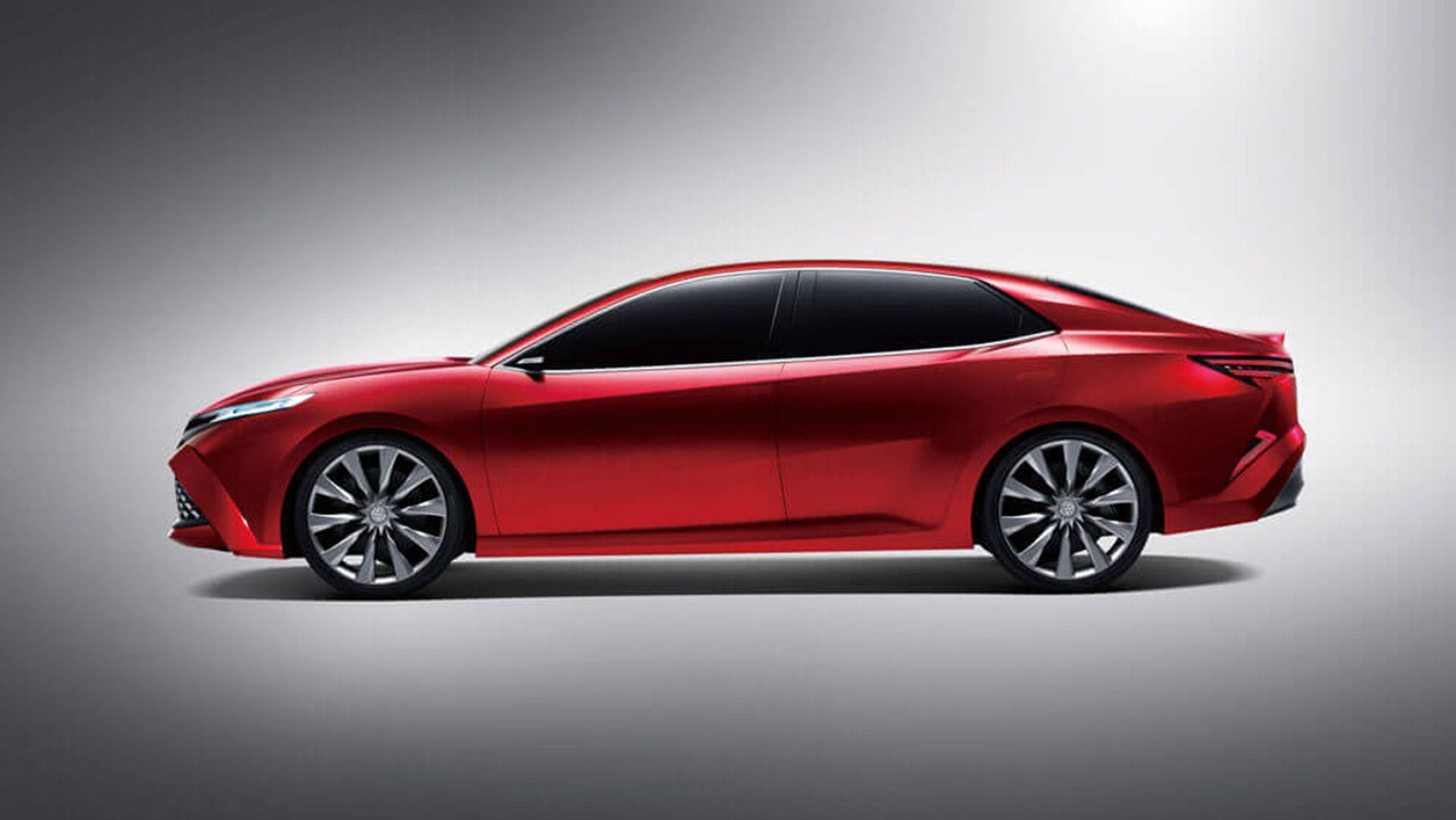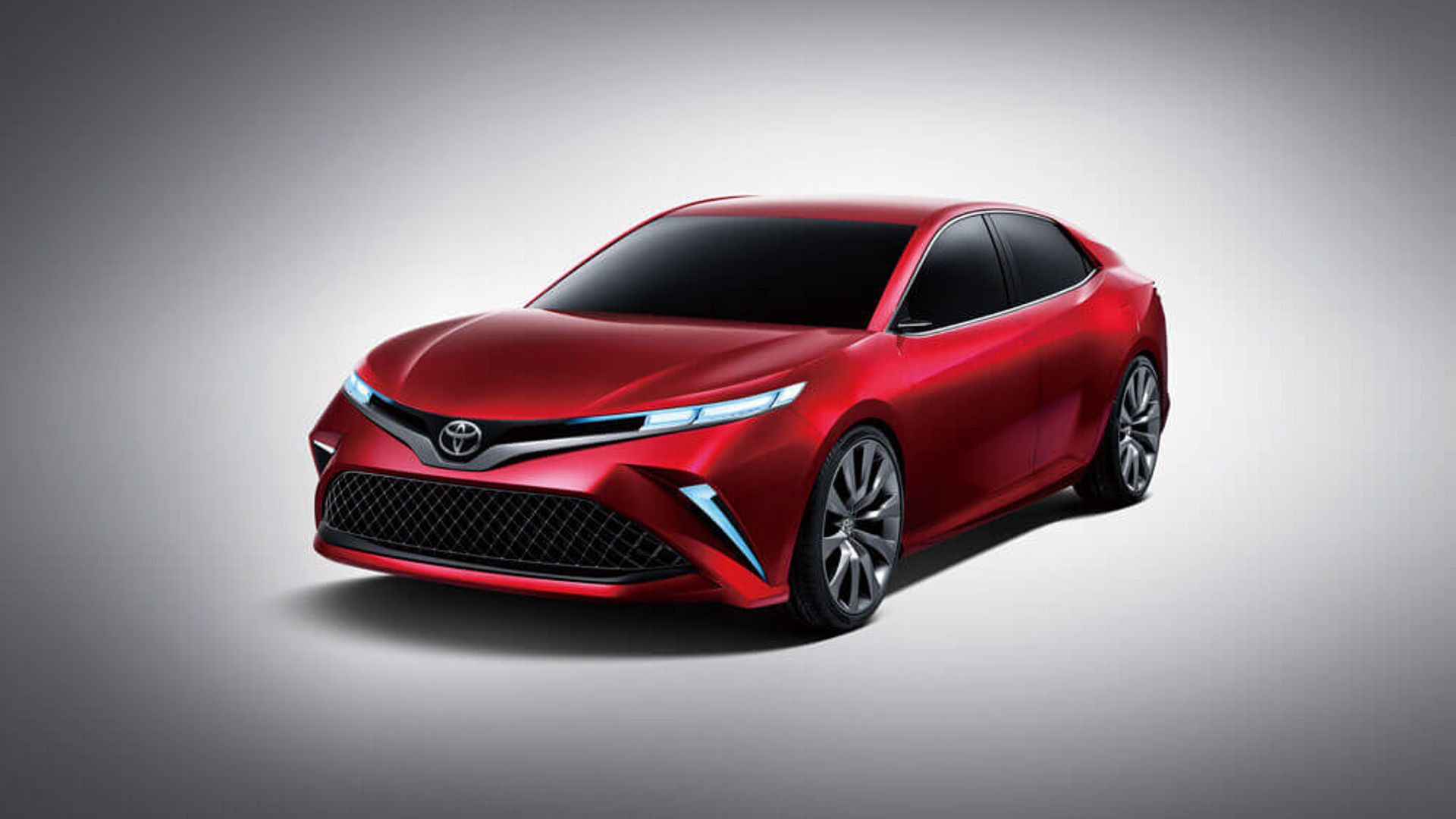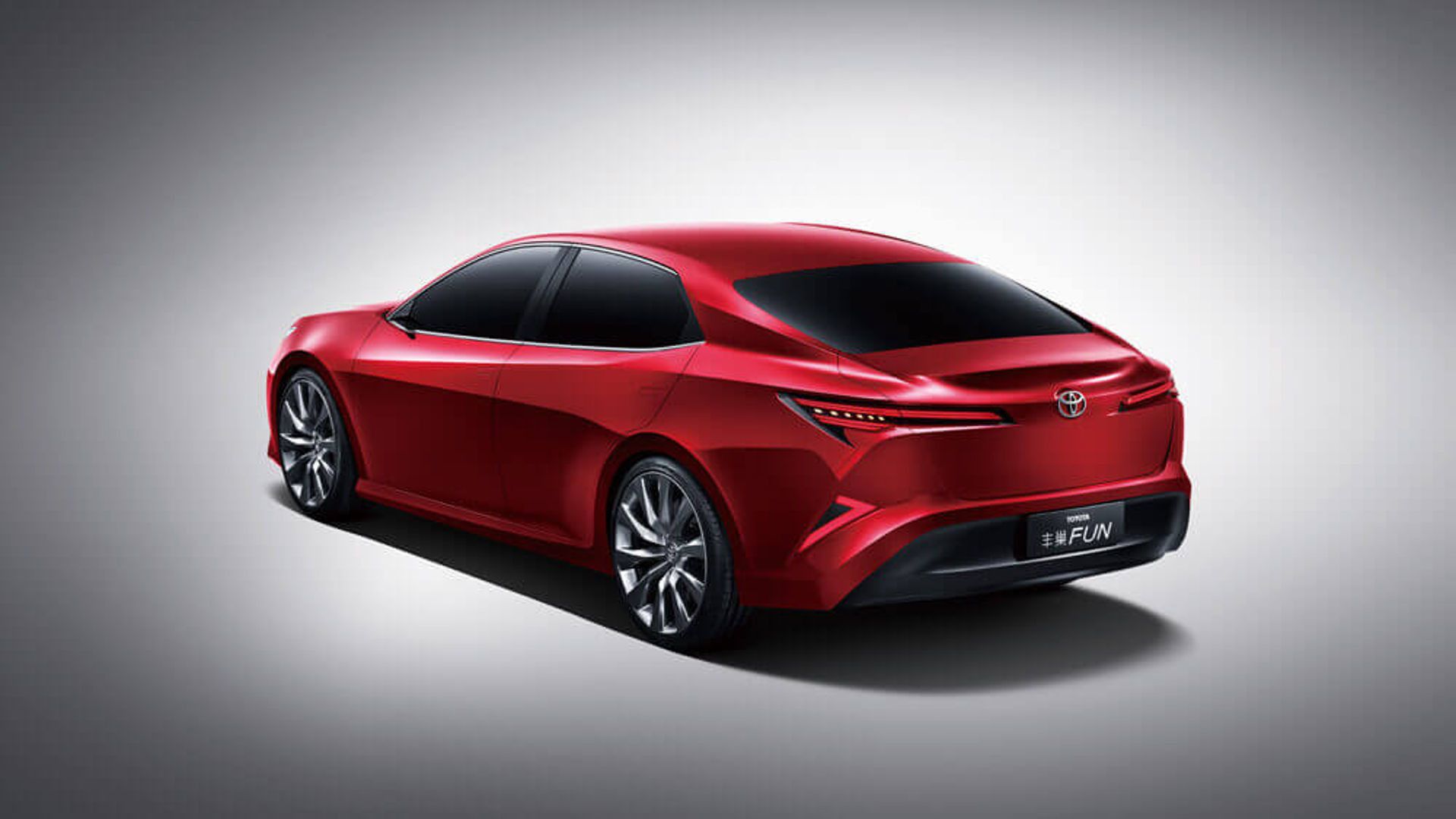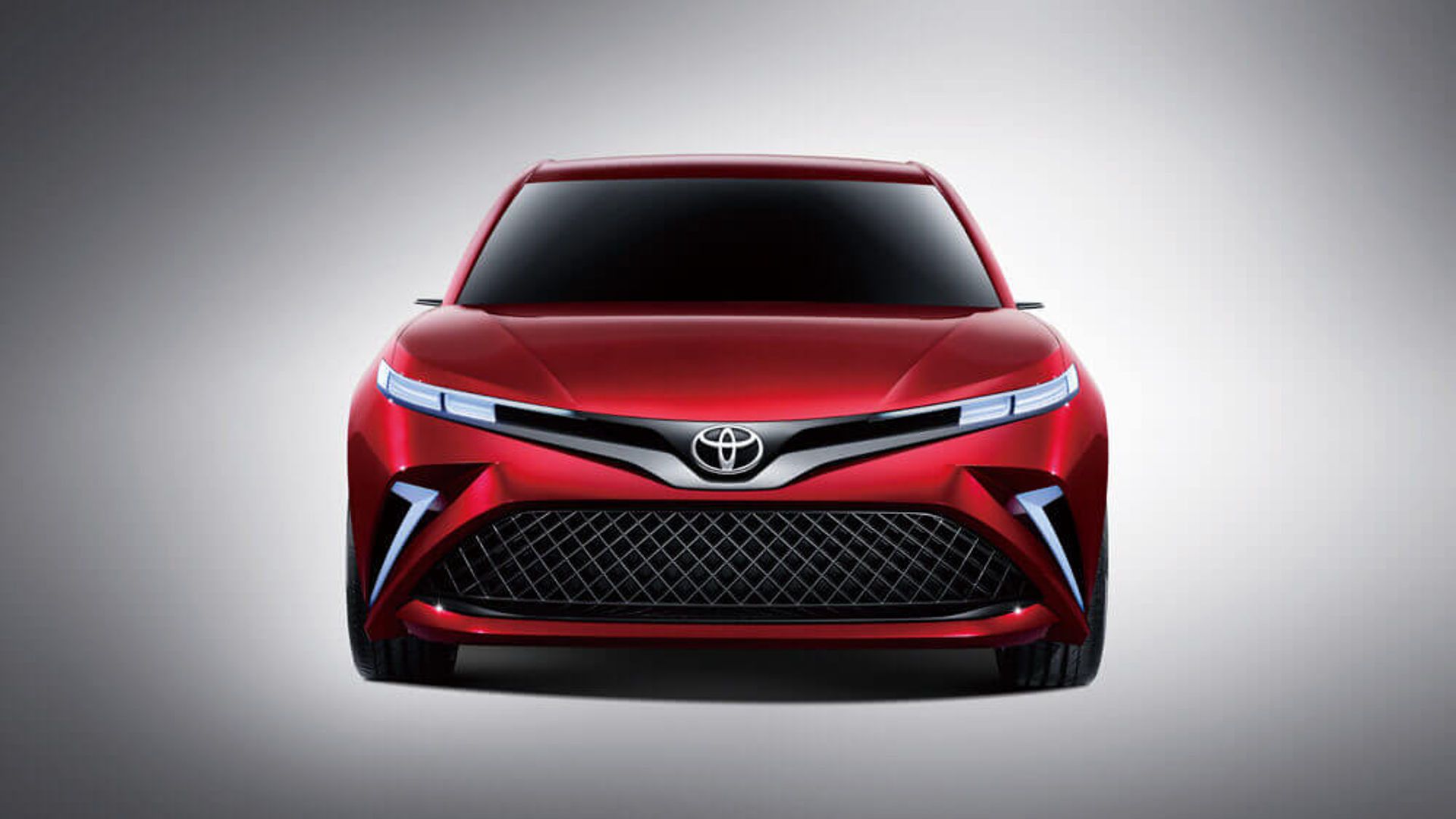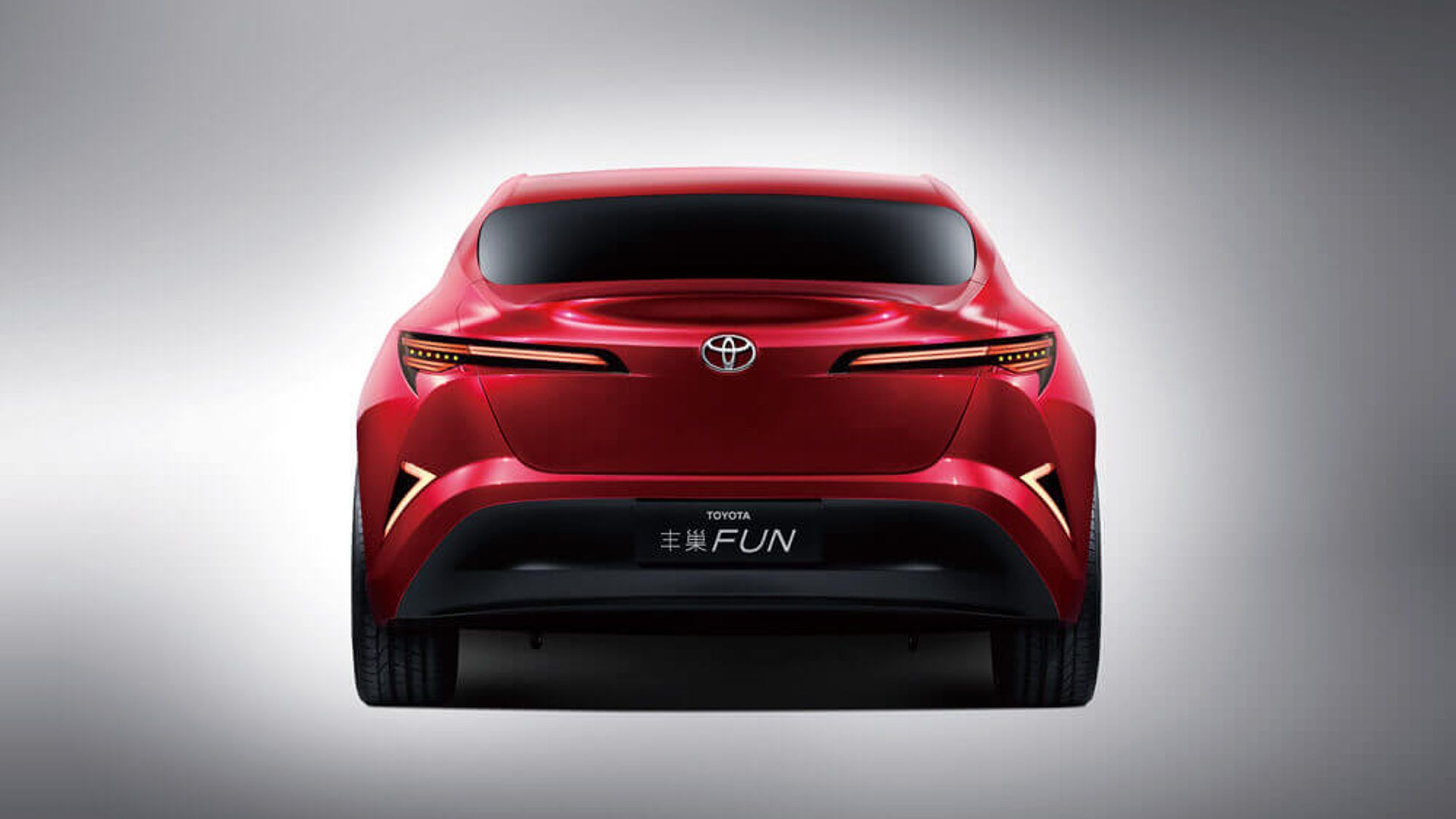I’ll get this out of the way: I’m not a fan of the new Toyota Camry’s design. I know it runs counter to what most have said about the sedan, but I’m not sold on it. The new Camry may look more alive than its ho-hum predecessors, but it feels like Toyota just threw in design pieces from a lot of its other models and decided to adopt it for the new Camry. The result is a little messy and lacks the kind of aesthetic consistency that, say, the Honda Accord has in sprinkles. Fast forward to the 2017 Shanghai Auto Show and there’s a model from Toyota called the Fun Concept. I say that's what the Camry should have looked like from the very beginning.
I know it’s a concept, so there’s more design leeway there to be forward-thinking, but if you look at it, there’s little that’s overbearingly futuristic about the Fun Concept’s design that Toyota couldn’t have adopted on the production version of the Camry. The sharp, slanted headlight configuration already has similarities to the Toyota Mirai and the sharp bumper, grille, and intakes all provide the kind of aggressive design nods that elevate the concept’s sporty and refined look. As a whole, the Fun Concept already looks like it's ready to hit production anytime soon. There are even some whispers in Shanghai that indicate it's in the auto show to provide a small glimpse into the future of the Camry in the Chinese market. If it does end up that way, it’s going to feel like a missed opportunity for Toyota as far as the U.S. market is concerned.
Continue after the jump to read the full story.
On the bright side, Toyota’s new Global Architecture modular platform looks very promising
The Toyota Fun Concept is getting its share of attention, and there’s good reason for that. The car just looks sharp. But Toyota has another reason to get excited about it, and it has everything to do with something that most people don’t even see. The Japanese automaker’s new modular platform, appropriately called “Toyota New Global Architecture,” or TGNA for short, is at the core of the Fun Concept and is the backbone of Toyota’s future global range of models.
In other words, it’s going to be used in a significant number of Toyota models moving forward, and the way it’s used in the Fun Concept shows the kind of versatility it has as an all-encompassing platform. There’s no word on the exact number of models that are scheduled to use TGNA, but the safe estimate is that at least half of all Toyota’s models worldwide are in line to use it by 2020, including the Toyota Prius, the C-HR, the Corolla, and not surprisingly, the Camry.
If it doesn’t seem like Toyota’s going all-in on TGNA, consider then the company’s announcement of a $1.3 billion investment into its production facility in Kentucky, one that’s largely made up of upgrades to support the platform. That move in itself tells you that there are a lot of people in the company that have high hopes for the platform to underpin a wide variety of models in the future, as is the planned objective from the very beginning.
The Fun Concept may be a preview of a new version of the Toyota Camry in China, but at the heart of it all, the TGNA modular platform that underpins it is actually the most important part about the concept. At the very least, it partly explains why Toyota has yet to reveal any important details about the concept sedan other than the fact that it’s using the TGNA platform.
It’s not a sexy headline by any means, but it goes to show how deeply layered the auto industry really is when a concept is developed specifically to showcase something as technical as a modular platform. Hopefully, the Fun Concept translates to a future version of the Camry too. That would make this presentation at the 2017 Shanghai Auto Show all the more worth it.

